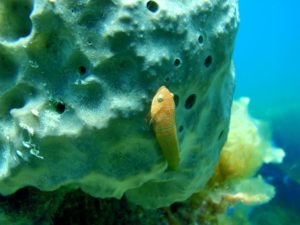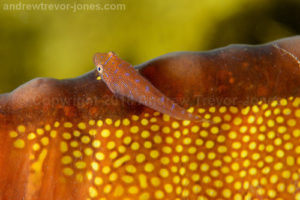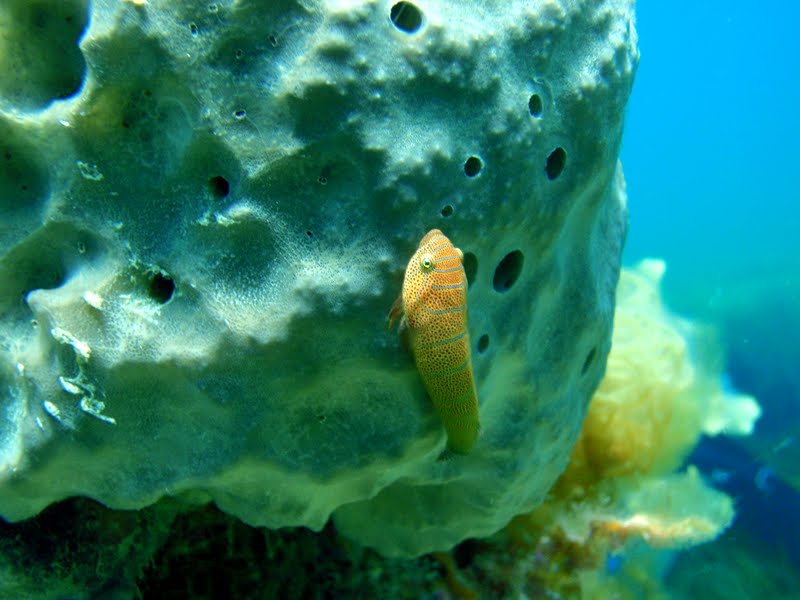David Muirhead recently found out via the iNaturalist “About link” that many (most?) of the world’s 100+ species* of clingfish, especially those in the miniaturisation clade, which includes most of the southern Australian species, have a mucous coat that is distasteful to humans and outright toxic to their predators.
* (There are thought to be up to double that number.)

Western cleaner clingfish
(Taken by Steve Reynolds at Rapid Bay jetty in December 2011)
“I knew that some locally have mucous coats, but I didn’t know why,” David said, “and apparently it is almost proven (but still arguable) that one particular species*, not from Australia, has venom glands, and with maximum length of less than 3 cm, that clingfish is thought to be the world’s smallest venomous fish. It is smaller than all the scorpion fish and catfish, etc…. Amazing!”
* (There are actually two species! According to iNaturalist, “Another defense (sic) appears to be present in a couple of Acyrtus and Arcos species. They have a spine at their gill cover and it appears to be connected to a venom gland. Although the evidence presently is circumstantial, this strongly suggests that the world’s smallest venomous fish is Acyrtus artius, which is less than 3 cm (1.2 in) long.”)
According to iNaturalist, “The skin of clingfishes is smooth and scaleless, with a thick layer of protective mucus (sic). In at least Diademichthys lineatus and Lepadichthys frenatus, the mucus production increases if the fish is disturbed. The taste of their mucus is highly bitter to humans and it can kill other fish. This is due to their skin and mucus containing a grammistin-like toxin (the toxin in soapfish, such as Grammistes). Whether any other clingfish has toxins in its skin or mucus is currently unknown.”
Also, “some members of these genera have poisonous skin and mucus (it is unknown if all of them are poisonous).”
David added that a new species of clingfish is described almost daily as we speak. Also, “One species has a ventral suction disc that can lift 300 kg. Try flicking that off the kelp or your camera port!!!!!!”
Actually, according to iNaturalist, “The sucking disc can be remarkably strong, in some species able to lift as much as 300 times the weight of the clingfish”, NOT 300kg.
David also commented, “I got lucky with iNat. I found that a lengthy comment trail from 2 years ago under a grass clingfish observation had been left unfinished, so I entered Barryichthys hutchinsi and found that it was the first for the species on iNat”.

An Eastern Cleaner Clingfish, Cochleoceps orientalis
on the side of a Common Seadragon, Phyllopteryx taeniolatus
(Image by Andrew Trevor-Jones)
(Source: https://www.inaturalist.org/projects/9358/journal/14084 )

